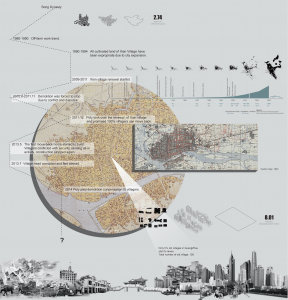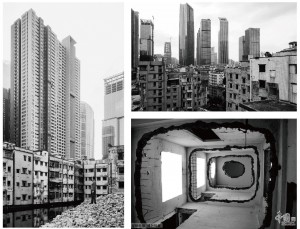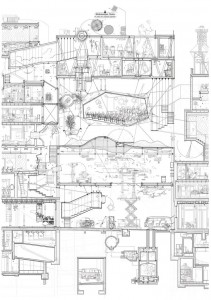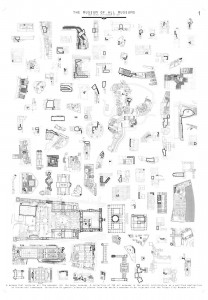The Betweenness of the City
|
WHAT? Due to the value of ground and increase of population , modern city gradually turns into higher density and changed from texture-oriental to object-oriental. Lugwig designed “vertical city” in 1924 based on the four urban design principles of CIAM and I am amazing to find this proposal is quite similar with modern city, actually cities are getting more and more similar, regular, convenient, rational but boring. Aldo Rossi has criticized this “functionalism” for urban design and hold the view that city can not be designed in seeming rational “principle”. City is syntheses of urban facts and related with specific situation in different time and different place. Architects should not only focus on the image of city but understand how architecture aggregated into a city from single object, it’s a process of collective memory. This process is not only about the new construction but also the renewal of old district. Taking GuangZhou as an example, There are 138 traditional city villages in GuangZhou occupied 5.54 million square kilometers and 30% are in the downtown area, only 5% of these villages started transformation and renewal. So old city villages renewal becomes one of main ways for the government to reclaim land and redevelop. For most cases villagers move back in modern apartment after 5-8 years construction but in this period they live in low quality. This thesis would study old city village renewal process between demolition and completion exploring architectural interventions in different renewal phases. WHY? The site Xian village locates in Zhu Jiang New town, the new CBD of GuangZhou. Xian village renewal started at 2009 but due to many reasons such as political, corruption, conflict between villagers and the government, the construction stopped again and again. Xian village now like a collage containing almost all phases of city development. Traditional village houses, the ancestral temple, buildings under demolition, half-abandoned buildings, under-construction move-back apartment, illegal construction stand together no the site. All scenario unfold in the background of prosperous Zhu Jiang New Town dramatically and ironically. This thesis aims to do research about the contradiction within city villages renewal process , design specific strategies for each stage from architectural perspective and overlap all strategies in a complex architecture which may accommodate open space, park, school, museum, nursing home, office, commercial. etc. This complex is a story based on the renewal timeline and grows according to villagers’ needs in specific construction stage. For example, when part of villages start to demolish the environment would become unlivable, what can we do for the rest villagers? When the high-rise modern community finish the traditional texture as well as the lifestyle here will lost, what should we do to balance? And I will the complete form can meet the high density requirement. This architecture optimize village facilities improving villagers’ living quality in renewal process and act as the memorial building reminds people of the whole city renewal process, the traditional texture and the lifestyle. HOW? This thesis will base on a lot of research about the city texture, city development process, changes of people’s lifestyle. etc. And use collage as the methodology.One study case is the proposal for New Taipei Museum of art designed by Federico Sariano, they did research about the space for museum and collage them making a museum contains all museum. It is a collage based on the same program. Step 1: Study of old city village renewal process and GuangZhou morphology, thinking about the potential of this half-abandoned land. Analysis the lifestyle in traditional texture. Learning the mode from successful renewal project. Step 2: Identify each phases and explore the characteristic. Design specific strategies aiming to the contradiction and needs of different stages and expressed in architectural way. Step 3: Collage strategies to a complex architecture including facilities and many programs serving villagers and surroundings. This building meets the FAR requirement of and also as a narrator representing the story of Xian village renewal process. Possible programs: A complex with residential, playgrounds, park, open space, study center, school, nursing homes, museum, office and commercial.
BIBLIOGRAPHY 1. Rowe, Colin, 1978, and Fred Koetter, 1978, Collage City. Cambridge, Mass.: MIT, Print. 2. Aldo Rossi, 1982, The Architecture of the City. Cambridge, Mass.: MIT, Print. 3. Wang Shu, 2000, Fictionalizing City, TongJi University. |



